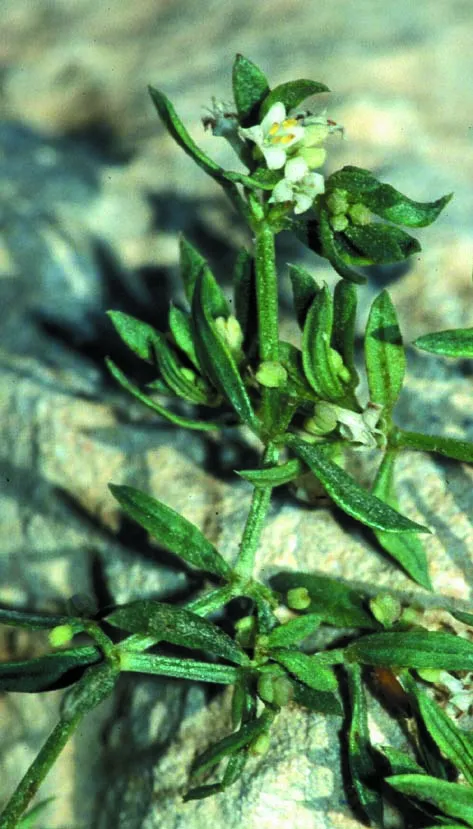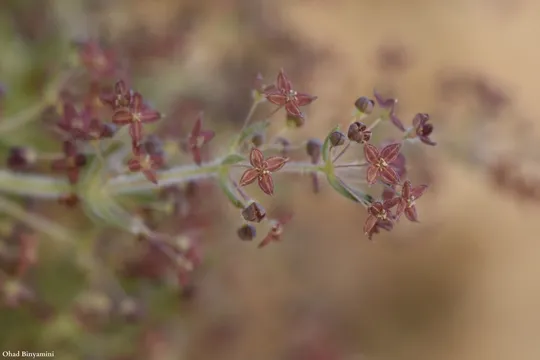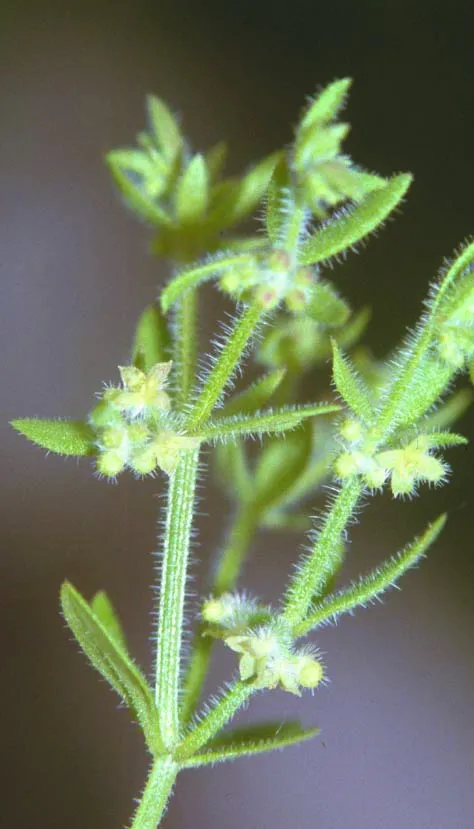Procumbent Bedstraw
Galium humifusum




Galium humifusum once grew only in the Jordan Rift Valley region. Aaron Aaronsohn collected
it in Jericho in 1908 and Dinsmore found it in the region in
1929 (either in
Jericho or along the Jordan River). In the Jerusalem Herbarium, there is sheet
from the Hatsbani collected by Gabrielit in 1929 in the “Dan Valley”, which is the basis for the record in the Flora Palaestina and other
guides that it "grew in the Hula Valley”. However, it seems likely that this record is from the Hatsbani springs in southern Lebanon (in 1929 the site was in Syria). In the maps
of the Flora Palaestina (Danin 2004) notes the species
from the Golan Heights as well, based on the literature. We emphasize that since establishment of
the state, G. humifusum has not been found in Israel, not even after 1967.
Springs, water canals and edges of regularly irrigated terraces. In Edom Galium
humifusum is a hedge plant along irrigated terraces and water canals.
For the genus, see Galium
chaetopodum.
G. humifusum has a corolla tube similar
to is the one characteristic of the genus Asperula, and indeed
the species was formerly considered to belong to Asperula (A.
humifusa). However, the corolla tube in G.
humifusum
is short; therefore it is now attributed to the genus Galium.
The researcher Nebelek described two varieties of G. humifusum (Feinbrun,
1976), a glabrous variety from Wadi Musa near Petra in Edom, and a hairy
variety which was described from Kurdistan and to which the plant from Hatsbani could
possibly belong to.
G. humifusum belongs to the group of perennial Galium, whose flowers are
white with a short corolla tube (i.e. the corolla is bell shaped not wheel-shaped as in the other
Galium) species. In Israel, the following species belong to this group: G.rivale that grows in wetlands in the Hula
Valley, and G.incanum and G.verun that grow in the (tragacanth zone on Mt. Hermon. G. humifusum is close to G.rivale
both morphologically and regarding its habitat. According to the Flora Palaestina
G.rivale has a white corolla and its lobes are
not pointed, whereas in G. humifusum the corolla is pale yellow and its
lobes end in a long point. In G.
humifusum the flowers blacken once
dry, while in G.rivale they remain green.
·
Galium humifusum became
extinct in the country before the establishment of the state. It was known only
from the Jericho area.
·
Its habitat – springs and traditional irrigation channels – is
vulnerable due to the shift to modern agriculture and use of pesticides.
Galium humifusum should be reintroduced to Jericho or
other habitats with water channels in the transition zone or in the arid Mediterranean region (Hula
or Kinarot Valleys). Seeds can be easily collected from the
large population in Petra and germinated in nurseries.
Galium humifusum is found in the eastern Mediterranean and
western Asia: Greece, Turkey, Syria and Lebanon, Iraq, Transcaucasia, Pakistan, India, southern
Russia, Crimea and Central
Asia.
In Jordan G. humifusum was collected from Edom
at a number
of springs near Tafila, near Shobek and near
the area of Petra, and once from the Karakh heights in southern Moab. In Wadi Musa, the stream and valley descending to ancient Petra, there is a large population that
extends along hundreds of meters of water channels and hedges between cultivated terraces irrigated by
several springs, chiefly En Musa,
at an altitude of 950-1,250 meters. In recent years (since 1998)
sewage work has been done on the wadi channel and it is now completely dry. The species is also very rare at the Petra archeological
site and grows in the Siq Canyon.
Galium humifusum is an herbaceous plant that integrates easily in hedges
and water canals. The species is very rare, and was formerly found on a single
site, in Jericho in the southern Jordan Valley. It was already extinct in Israel
before the war of independence. Common in the water canals in Wadi Musa in
Petra, from where it can be reintroduced to Israel.
Current Occupancy Map
| 1000 squre meter pixel | 5000 squre meter pixel | 10000 squre meter pixel | |
|---|---|---|---|
| number of observations | 0 | 0 | 0 |
| in total pixels | 0 | 0 | 0 |
| Family | Rubiaceae |
| Classification | On the endangered species list |
| Ecosystem | Humid |
| Chorotype | Eastern Mediterranean and Irano-Turanian |
| Conservation Site | Jericho |
| Rarity |
1
4
6
|
|---|---|
| Vulnerability |
0
0
4
|
| Attractiveness |
0
0
4
|
| Endemism |
0
0
4
|
| Red number |
1
-1.0
10
|
| Peripherality | 0 |
| IUCN category | DD EW EX LC CR EN VU NT |
| Threat Definition according to the red book | Extinct |
 Based on:
Based on:






